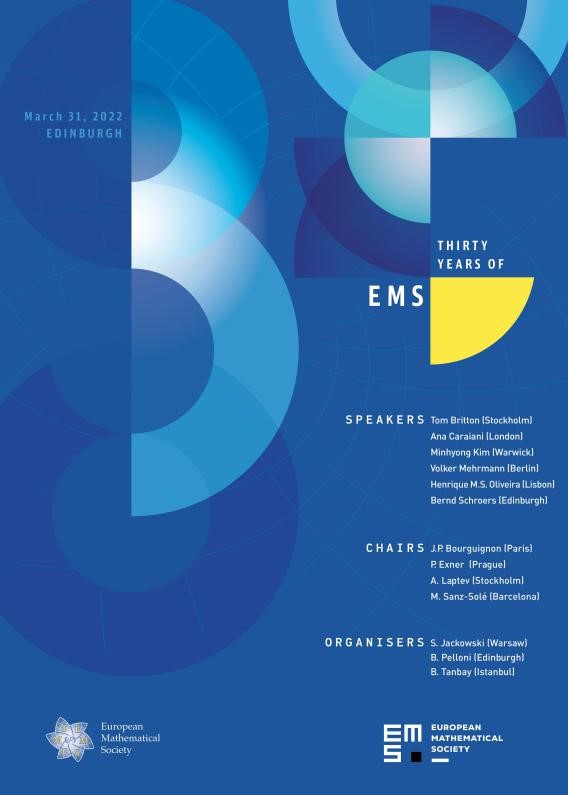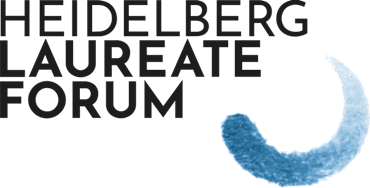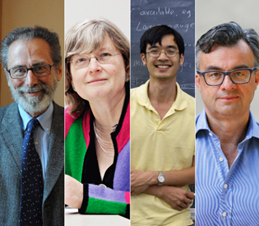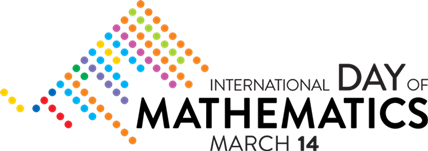The International Mathematical Union Five Awards ceremony was held at Aalto University |
|
The International Mathematical Union Five Awards ceremony was held at Aalto University in Helsinki, Finland, on July 5, 2022. Four of the Fields Medal winners are: Hugo Duminil-Copin | University of Geneva June Huh | Princeton University James Maynard | University of Oxford Maryna Viazovska | EPFL in Switzerland |
|
| Posted: 2022-07-06 | More... |
European Mathematical Society 30th Anniversary Celebration |
|
 |
|
| Posted: 2022-03-12 | More... |
The 8th Heidelberg Laureate Forum 2021 will be held soon |
|
 |
|
| Posted: 2021-09-16 | More... |
MCA 2021 will be held online in July |
|
 |
|
| Posted: 2021-04-18 | More... |
YVES MEYER, INGRID DAUBECHIES, TERENCE TAO AND EMMANUEL CANDÈS—2020 Princess of Asturias Award for Technical & Scientific Research |
|
 |
|
| Posted: 2020-09-04 | More... |
The International Day of Mathematics is on March 14 |
|
 |
|
| Posted: 2020-03-14 | More... |
XXXIX CNMAC 2019 Will Be Held In September |
|
 |
|
| Posted: 2019-09-06 | More... |
Publication Frequency of IJMSS |
|
The publication frequency of International Journal of Mathematics and Systems Science(IJMSS) is semi-annual. All articles that have been accepted will be online in time without delay. We welcome the high-quality reviews, regular research papers and short communications in all areas of pure and applied mathematics,etc.
Editorial Office of International Journal of Mathematics and Systems Science (IJMSS) |
|
| Posted: 2019-06-20 | |
Call for papers |
|
Prof. Maria Alessandra Ragusa |
|
| Posted: 2019-01-06 | More... |
Research News: Mathematicians solve age-old spaghetti mystery |
|
If you happen to have a box of spaghetti in your pantry, try this experiment: Pull out a single spaghetti stick and hold it at both ends. Now bend it until it breaks. How many fragments did you make? If the answer is three or more, pull out another stick and try again. Can you break the noodle in two? If not, you're in very good company. The spaghetti challenge has flummoxed even the likes of famed physicist Richard Feynman '39, who once spent a good portion of an evening breaking pasta and looking for a theoretical explanation for why the sticks refused to snap in two. Feynman's kitchen experiment remained unresolved until 2005, when physicists from France pieced together a theory to describe the forces at work when spaghetti -- and any long, thin rod -- is bent. They found that when a stick is bent evenly from both ends, it will break near the center, where it is most curved. This initial break triggers a "snap-back" effect and a bending wave, or vibration, that further fractures the stick. Their theory, which won the 2006 Ig Nobel Prize, seemed to solve Feynman's puzzle. But a question remained: Could spaghetti ever be coerced to break in two? |
|
| Posted: 2018-09-12 | |
Research News: New geometric shape used by nature to pack cells efficiently |
|
As an embryo develops, tissues bend into complex three-dimensional shapes that lead to organs. Epithelial cells are the building blocks of this process forming, for example, the outer layer of skin. They also line the blood vessels and organs of all animals. These cells pack together tightly. To accommodate the curving that occurs during embryonic development, it has been assumed that epithelial cells adopt either columnar or bottle-like shapes. However, a group of scientists dug deeper into this phenomenon and discovered a new geometric shape in the process. They uncovered that, during tissue bending, epithelial cells adopt a previously undescribed shape that enables the cells to minimize energy use and maximize packing stability. The team's results will be published in Nature Communications in a paper called "Scutoids are a geometrical solution to three-dimensional packing of epithelia." |
|
| Posted: 2018-09-12 | |
Research News: Engineering bacteria to exhibit stochastic Turing patterns |
|
How did the zebra get its stripes, or the leopard its spots? Humankind has been trying to answer such questions since our earliest recorded days, and they resonate throughout the extant mythologies and folklores of an earlier world. In modern times, we've looked to mathematical models and most recently to genomic science to uncover the explanation of how patterns form in living tissues, but a full answer has proven particularly hard to get at. The mechanism of pattern formation in living systems is of paramount interest to bioengineers seeking to develop living tissue in the laboratory. Engineered tissues would have countless potential medical applications, but in order to synthesize living tissues, scientists need to understand the genesis of pattern formation in living systems. |
|
| Posted: 2018-09-12 | |
| 1 - 12 of 12 Items | |




